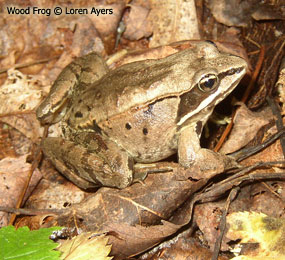
The Wisconsin Frog and Toad Survey (WFTS) includes approximately 100 permanent roadside routes throughout the state where volunteers monitor frog populations through calling surveys. Each route consists of 10 listening stations within hearing distance of wetlands that represent the range of local anuran breeding habitats such as ephemeral ponds, lakes, meadows, marshes, and wooded swamps. Stations are located far enough apart that individual frogs cannot be heard from more than one station. Depending on local topography and vegetation, inter-site distances can be as close as 0.5 miles, but may be up to 2.0 miles.
Routes are run after sunset under favorable conditions, i.e., relatively warm air temperature, wind <8 mph, and preferably high humidity. Most routes are 10-25 miles in length and take 2-3
- Individuals can be counted; there is space between calls (no overlapping of calls).
- Calls of individuals can be distinguished but there is some overlapping of calls.
- Full chorus. Calls are constant, continuous, and overlapping; individual calls can not be distinguished.
- Early spring (April 8-30 and minimum water temperature of 50°F)
- Late spring (May 20 - June 5 and minimum water temperature of 60°F)
- Summer (July 1-15 and minimum water temperature of 70°F)
